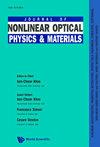高表面积SiO2负载聚酰亚胺碳气凝胶微球的制备:电化学应用
IF 2.3
4区 物理与天体物理
Q2 OPTICS
引用次数: 0
摘要
以聚酰胺酸盐和水解正硅酸四乙酯为原料,采用反相乳化法制备了一系列聚酰亚胺/二氧化硅气凝胶微球。然后对PI/SiO2气凝胶微球进行碳化和蚀刻,得到碳气凝胶微球(CAMs)。采用扫描电镜、透射电镜和氮气等温吸附对微球的微观形貌和孔隙结构进行表征;电化学工作站对cam的电化学性能进行了测试。结果表明:通过调整SiO2的含量,可以得到具有不同孔结构和比表面积的cam;SiO2含量为50%时,其最大比表面积为1166.9 m2 g−1,总孔容为1.2369 cm3 g−1。当用作超级电容器的电极材料时,这些cam在三电极系统中的最大比电容为125.1 F g−1,在30 a g−1时的最大比电容为53.3%。本文提出了一种利用线性PI前驱体和SiO2支撑骨架制备高比表面积cam的新策略。本文章由计算机程序翻译,如有差异,请以英文原文为准。
Fabrication of high-surface-area, SiO2 supported polyimide carbon aerogel microspheres: electrochemical application
A series of polyimide (PI)/SiO2 aerogel microspheres were prepared by using polyamide acid salt and hydrolyzed tetraethyl orthosilicate based on the reverse-phase emulsion method. Then, PI/SiO2 aerogel microspheres were carbonized and etched to obtain carbon aerogel microspheres (CAMs). Scanning electron microscope, transmission electron microscope and nitrogen isothermal adsorption were used to characterize the micro-morphology and pore structure of the microspheres; and electrochemical workstation was used to test the electrochemical performance of the CAMs. The results showed that CAMs with different pore structures and specific surface area were obtained by adjusting the content of SiO2. Highest specific surface area of 1166.9 m2 g−1 and a total pore volume of 1.2369 cm3 g−1 were achieved at a SiO2 content of 50%. When used as the electrode materials for supercapacitors, these CAMs demonstrated a maximum specific capacitance of 125.1 F g−1 in a three-electrode system and a maximum capacitance of 53.3% at 30 A g−1. This article provides a new strategy for the preparation of CAMs with high specific surface area by using linear PI precursor and SiO2 support skeleton.
求助全文
通过发布文献求助,成功后即可免费获取论文全文。
去求助
来源期刊
CiteScore
3.00
自引率
48.10%
发文量
53
审稿时长
3 months
期刊介绍:
This journal is devoted to the rapidly advancing research and development in the field of nonlinear interactions of light with matter. Topics of interest include, but are not limited to, nonlinear optical materials, metamaterials and plasmonics, nano-photonic structures, stimulated scatterings, harmonic generations, wave mixing, real time holography, guided waves and solitons, bistabilities, instabilities and nonlinear dynamics, and their applications in laser and coherent lightwave amplification, guiding, switching, modulation, communication and information processing. Original papers, comprehensive reviews and rapid communications reporting original theories and observations are sought for in these and related areas. This journal will also publish proceedings of important international meetings and workshops. It is intended for graduate students, scientists and researchers in academic, industrial and government research institutions.

 求助内容:
求助内容: 应助结果提醒方式:
应助结果提醒方式:


